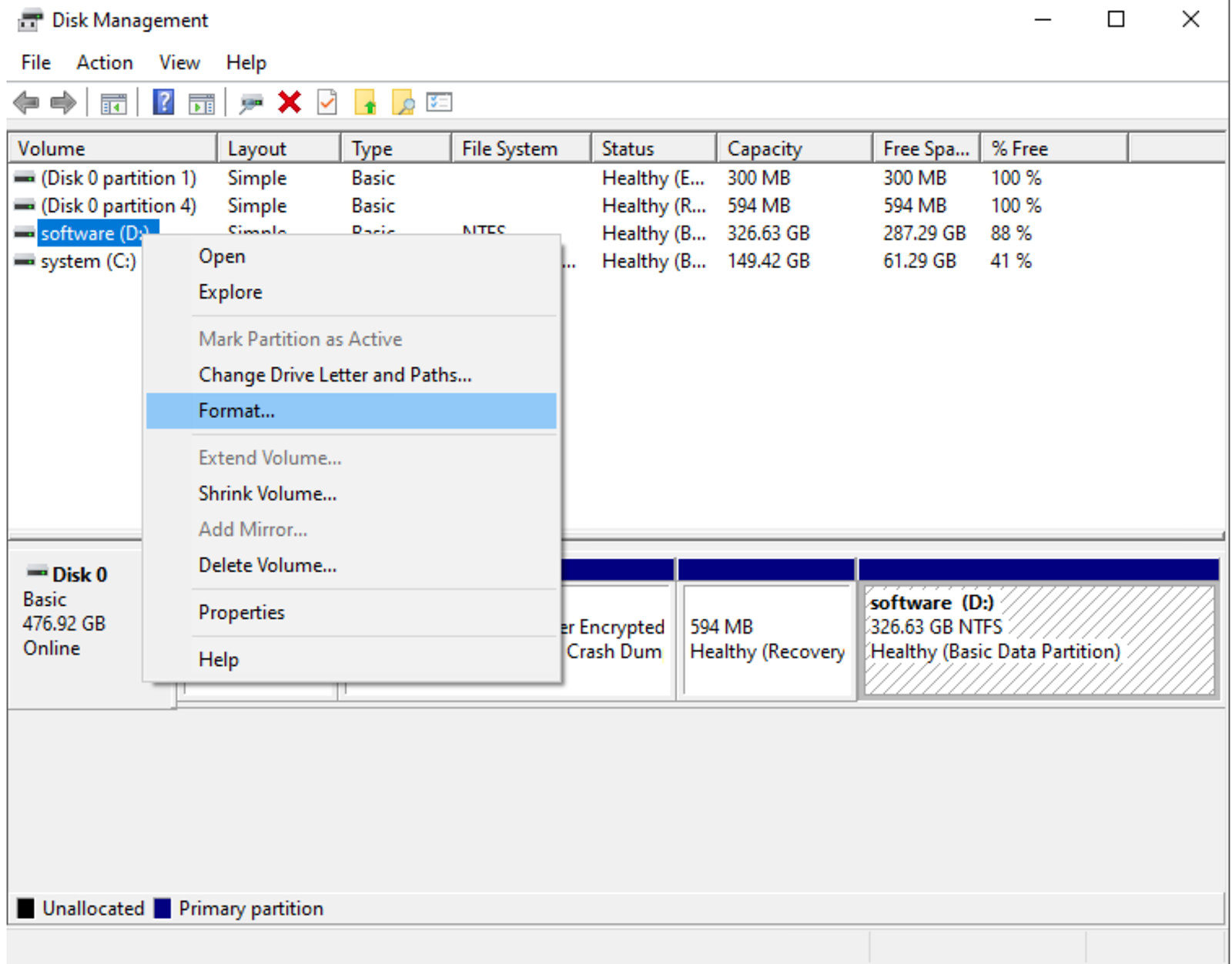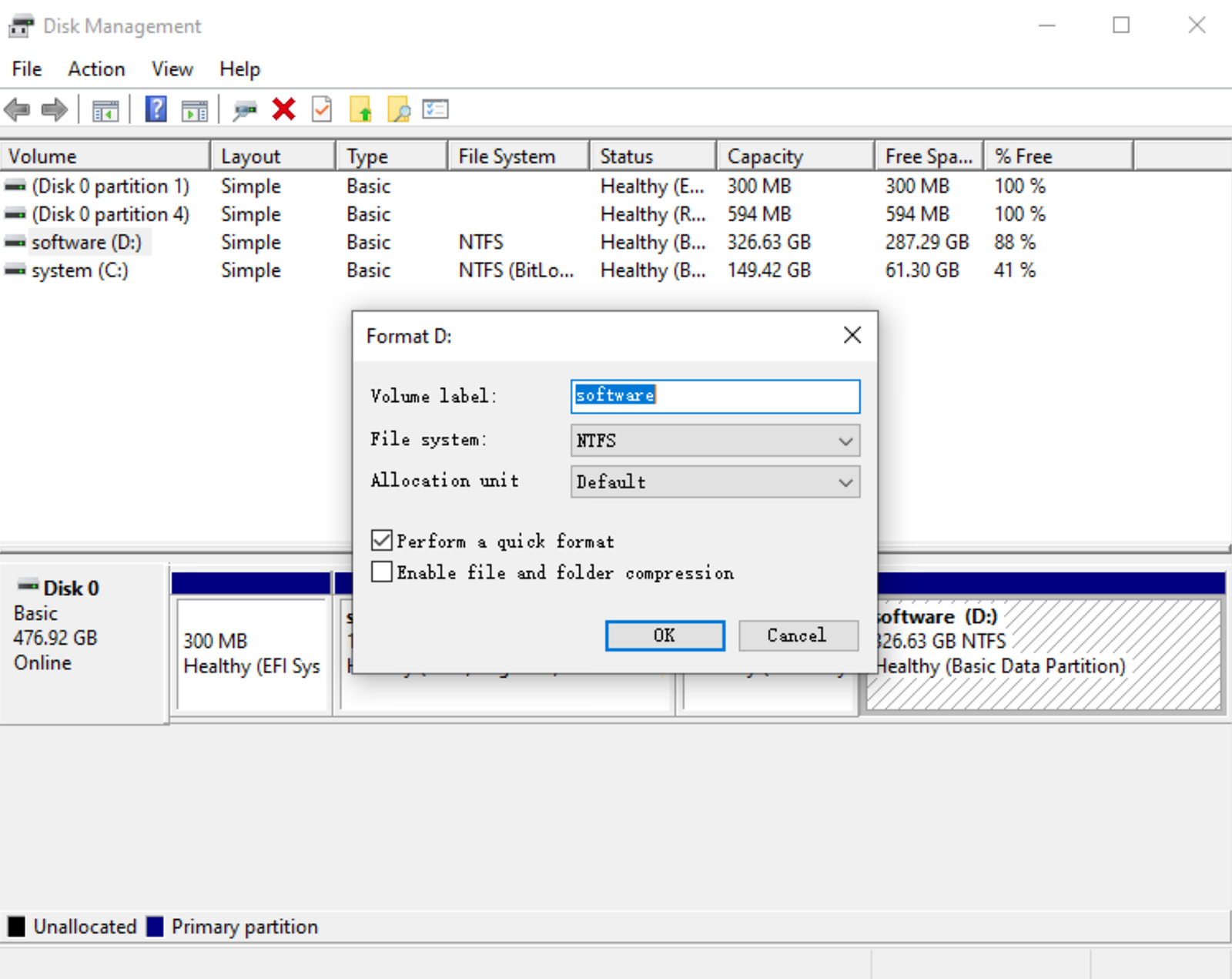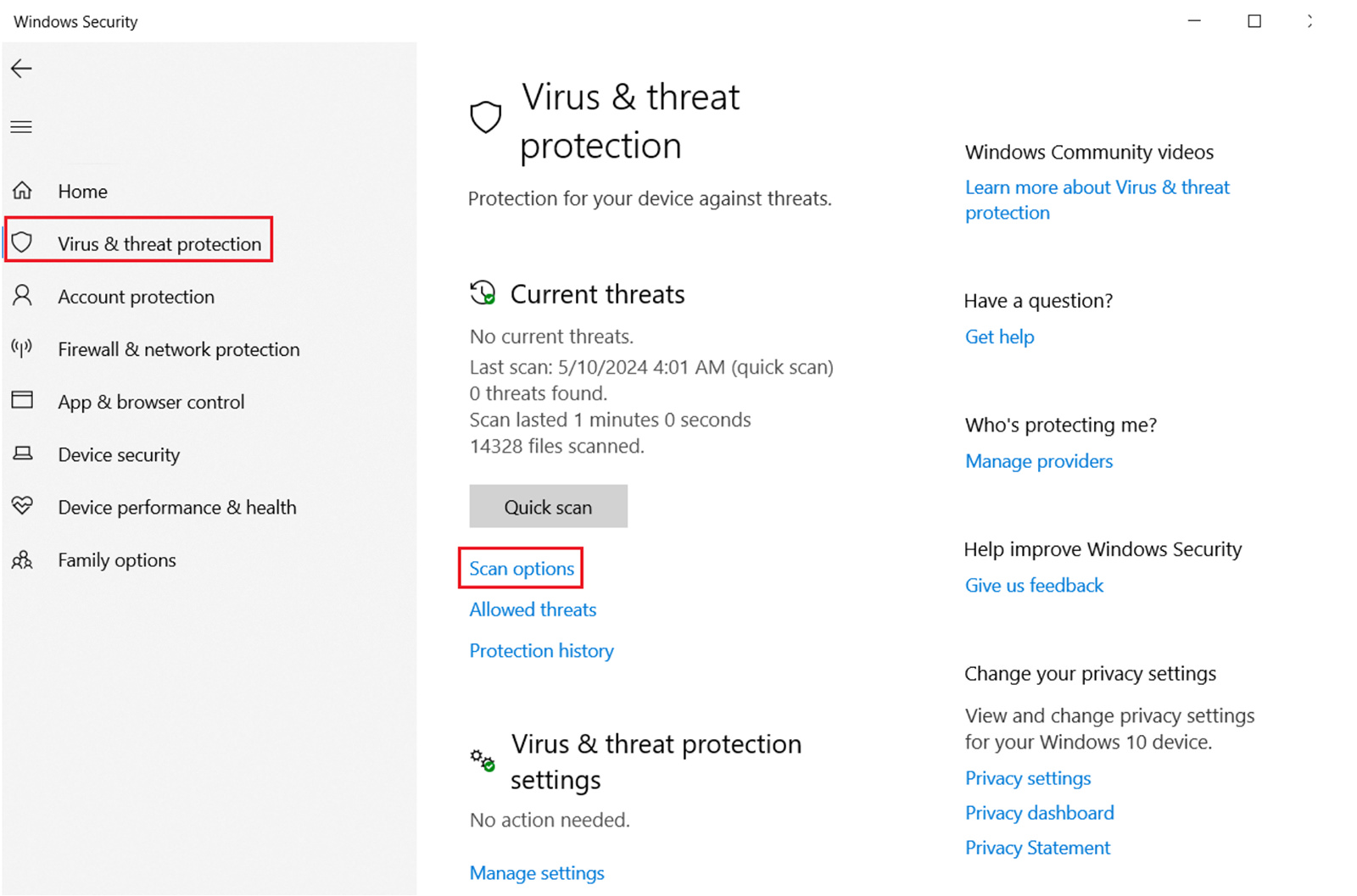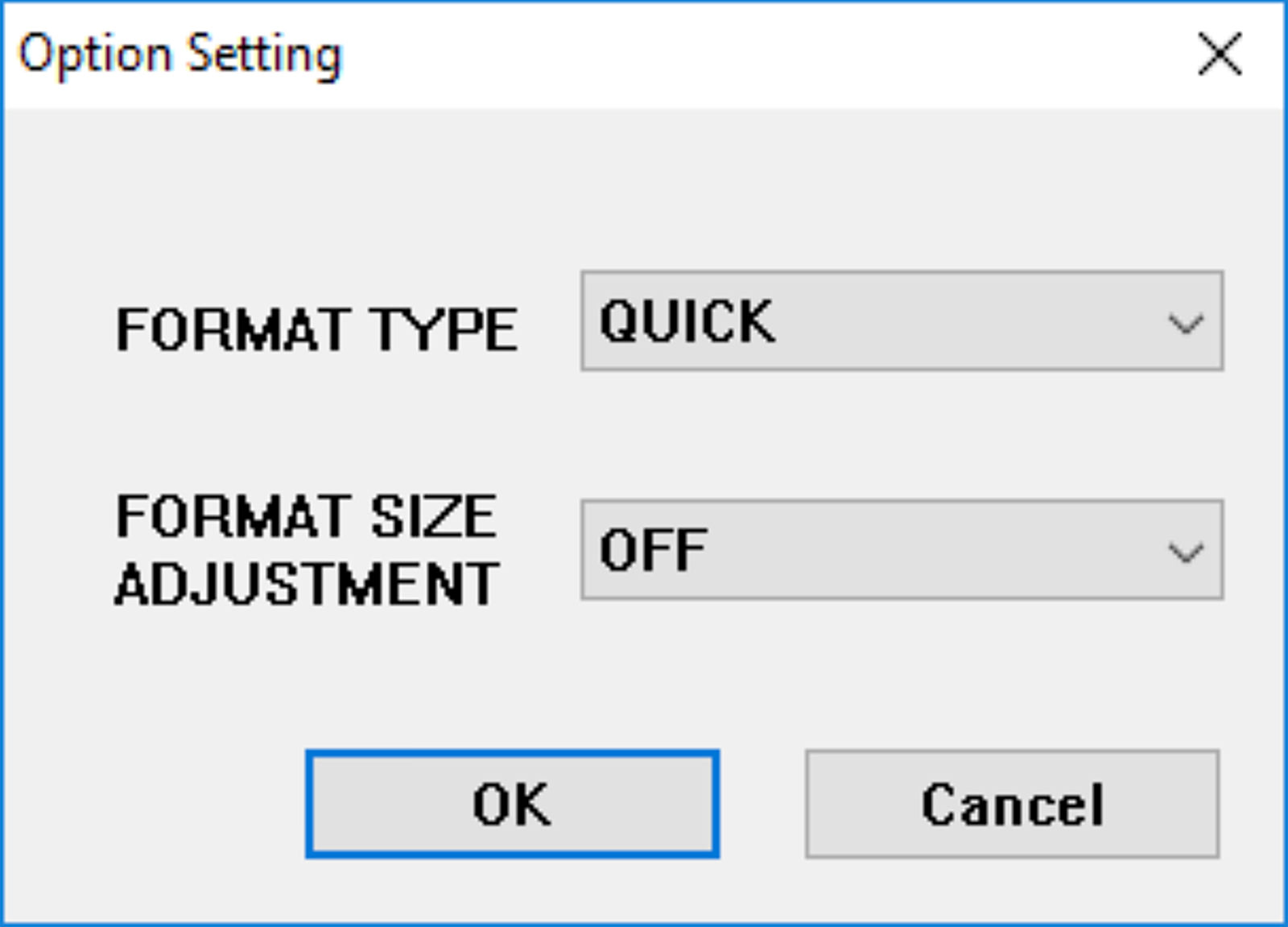How to Fix ‘Windows Was Unable to Complete the Format’ (6 Ways)
The “unable to format pen drive or SD card” error can feel frustrating when you’re trying to get things done. Whether you need to prepare your USB drive or memory card for new use, erase old data, or fix issues, this error can stop you in your tracks.
Before we dive into the solutions, it’s important to understand why the “Windows was unable to complete the format SD card” error occurs. In this guide, we’ll explain the common causes of this issue and outline 6 simple ways to fix it. Keep reading to get your storage device back in working order!

Reasons for ‘Unable to Format’ Error
Before fixing the “Windows was unable to complete the format SD card” error, it’s important to understand why it happens. Knowing the cause can help you apply the right solution. Here are some common reasons for this issue:
- The drive could be write-protected, preventing any changes.
- Viruses or malware on the drive may block formatting.
- A drive without partitions can cause formatting problems.
- Physical damage, like bad sectors or corruption, might be the issue.
Steps to Take Before Fixing
Some USB drives and memory cards have a “Write Protection” switch. When this switch is enabled, the drive becomes read-only, causing the ‘Windows was unable to format USB/SD card’ error. This means you can view files on the drive but can’t add, delete, or modify them.
Before trying any solutions, check if your storage drive has write protection enabled. If it does, turn it off. For example, with a mini SD card, insert it into an SD adapter and slide the write-protection switch to the off position.
6 Methods to Resolve the Error
Here are 6 methods to resolve the ‘Windows was unable to complete the format’ error. Try each solution based on its cause and your experience level:
Fix 1: Format with 4DDiG Partition Manager
If the error occurs due to corruption, you can use a reliable tool like 4DDiG Partition Manager. This tool not only formats drives but also restores formatted partitions, recovers deleted partitions, and repairs RAW partitions. Other key features include:
- Resize, shrink, split, merge, create, delete, or format partitions.
- Clone an entire hard drive to back up data.
- Fix damaged EFI/MBR and non-booting disks.
- Move Windows to SSD without reinstalling.
- Convert MBR to GPT and upgrade to a larger drive without losing data.
- Change drive letters and create bootable WinPE media.
Follow these steps to format your drive using this tool:
- Download and install 4DDiG Partition Manager. Connect your USB or SD card to the computer and launch the tool.
- Select “Partition Management.” Right-click the partition you want to format and choose “Format.”
- Set the volume label, file system, and cluster size. Click “OK.” Confirm the process by pressing “Yes.” Wait for the formatting to complete, then click “Done.”
- Preview the formatting result. If satisfied, click “Execute 1 Task(s).” Confirm by pressing “OK.” The formatting will then begin.



Fix 2: Use CHKDSK to Repair Disk Errors
Faulty sectors on your storage drive may trigger the ‘Windows was unable to complete the format flash drive’ error. You can use Windows’ built-in CHKDSK tool to scan and repair these bad sectors. Here’s how:
- Type
cmdin the Windows search bar. Select “Command Prompt” and run it as an administrator. - Enter the command:
chkdsk [drive letter]: /f /r /x. Then, press “Enter.” - Open “File Explorer.” Right-click the drive you want to format and choose “Format.”
- Select “NTFS” as the file system, check “Quick Format,” and click “Start.”

Fix 3: Format with Command Prompt
If CHKDSK doesn’t work, you can use the Command Prompt to format the drive directly. Follow these steps:
- Type
cmdin the Windows search bar. Select “Command Prompt” and run it as an administrator. - Use one of these commands to format the drive with your preferred file system, replacing “[drive letter]” with the correct drive letter:
format /FS:FAT32 [drive letter]orformat /FS:NTFS [drive letter]. Then, press “Enter.”
Fix 4: Format with Disk Management
Windows’ Disk Management utility is another way to format drives affected by the ‘Windows was unable to complete the format SD card’ error. This tool allows you to allocate drive letters, create or delete partitions, and organize your drives. It also provides details about your storage devices, like health, capacity, and free space. Here’s how to use it:
- Right-click the “Start” menu and select “Disk Management.”
- Locate your SD card or USB drive in the list. Right-click on it and select “Format.”
- Set the “volume label,” “file system,” and “allocation size.” Tick the box for “Perform a quick format,” and click “OK.”


Fix 5: Scan for Viruses
Sometimes, the ‘Windows was unable to format USB’ error may result from a virus or malware infection, either on your drive or computer. If malware is the cause, it may prevent the formatting process and trigger the ‘unable to format pen drive/memory card’ error.
Use Microsoft Defender Antivirus, a built-in Windows tool, to scan for and remove malware. Follow these steps:
- Search for “Windows Security” in the search bar and open the application.
- Click “Virus & threat protection” on the left menu, then select “Scan options.”
- Choose the “Full Scan” option and click “Scan now.”


Fix 6: Use SD Memory Card Formatter
Windows’ default formatting tools are versatile but may not be ideal for SD cards. Using them can sometimes slow down your memory card. To resolve the ‘Windows was unable to complete the format SD card’ error and optimize your card’s performance, use the “SD Memory Card Formatter.”
This tool, developed by the SD Association, provides a more thorough and SD-specific formatting process. Here’s how to use it:
- Download and install the “SD Memory Card Formatter” tool on your computer. Connect your SD card to the PC.
- Open the formatter and select the SD card you want to format. If the tool doesn’t detect the card, click “Refresh.”
- Choose between “Quick format” and “Overwrite format.” Overwriting files is more secure, especially if you plan to share the card, but it takes more time.
- If necessary, enable “CHS format size adjustment.” This feature can help with unrecognized SD cards and improve compatibility with different devices.
- Assign a name to your SD card, then click “Format.” Confirm the process when prompted.


Conclusion
Dealing with the ‘Windows was unable to complete the format’ error can feel like hitting a wall, but don’t worry-it’s usually fixable. The steps in this guide give you plenty of options to troubleshoot and get your drive working again, whether it’s a simple issue like write protection or something trickier like bad sectors.
Start with the basics, like checking for malware or using tools like CHKDSK and Disk Management. If those don’t work, specialized tools like SD Memory Card Formatter or 4DDiG Partition Manager can handle more stubborn problems. And if nothing works? Well, it might be time to consider replacing the drive.
The key is to take it step by step, and before you know it, your USB or SD card should be good as new-or at least close enough to get the job done!
Frequently Asked Questions
Why does Windows say it was unable to complete the format?
This error can occur due to several reasons:
- The drive is write-protected.
- The drive has bad sectors or is corrupted.
- The drive is infected with malware.
- The drive is physically damaged.
How can I remove write protection from my USB drive or SD card?
To remove write protection, start by checking your USB drive or SD card for a physical switch. If there is one, ensure it is set to “unlock.” If the issue persists, you can use the Diskpart utility in Windows to clear write protection.
- Open Command Prompt as an administrator.
- Type
diskpartand press Enter. - Enter
list diskto display connected drives. - Identify your drive and type
select disk [number]. - Type
attributes disk clear readonlyand press Enter.
What should I do if my drive has bad sectors?
To check and repair bad sectors:
- Open Command Prompt as an administrator.
- Type
chkdsk [drive letter]: /f /r /xand press Enter. - Wait for the process to complete, then attempt to format the drive again.
Can I recover data from a drive that Windows cannot format?
Yes, you can attempt data recovery using specialized software. Tools like DiskGenius offer features to recover data from drives that Windows cannot format.
Is it safe to use third-party tools to format my drive?
Yes, using reputable third-party tools is safe and can be effective. For instance, DiskGenius provides a free tool to format partitions, check bad sectors, clone disks, and more.